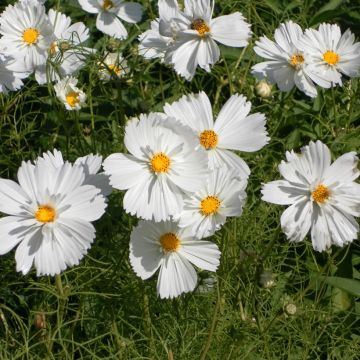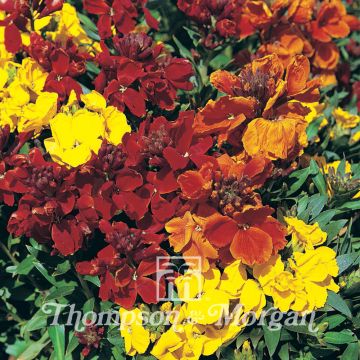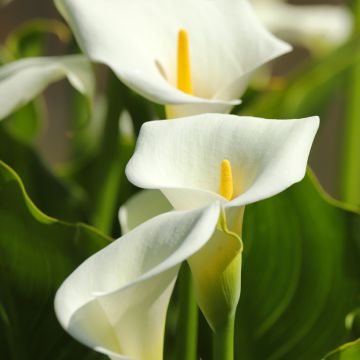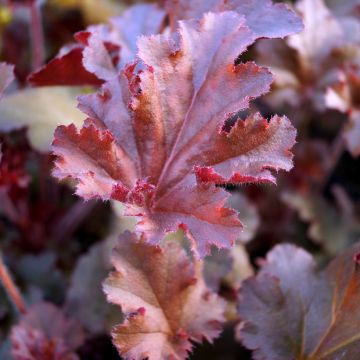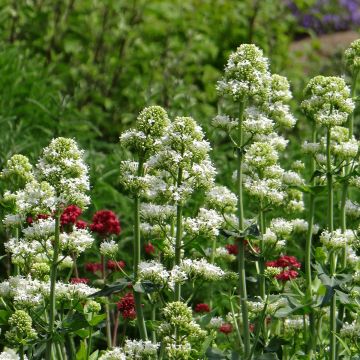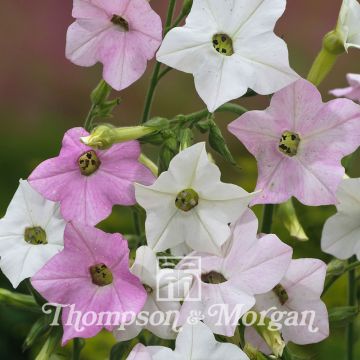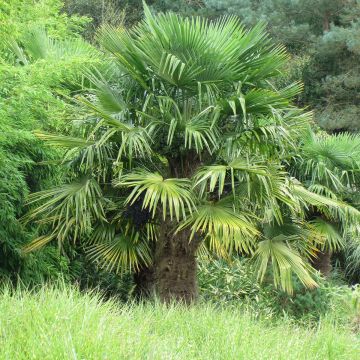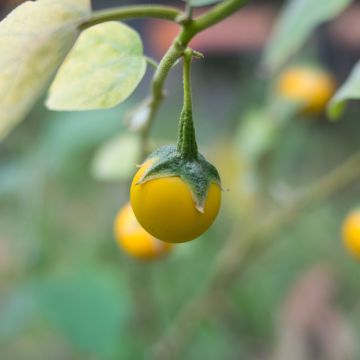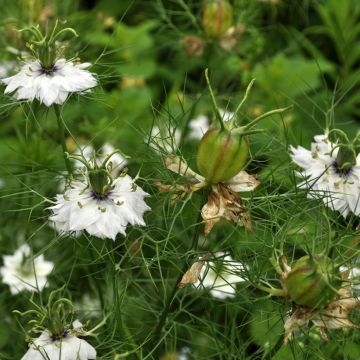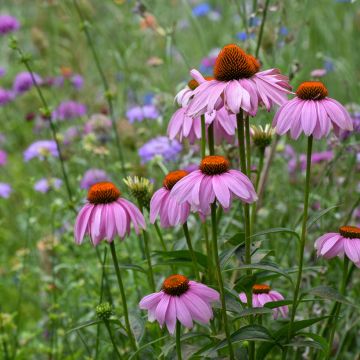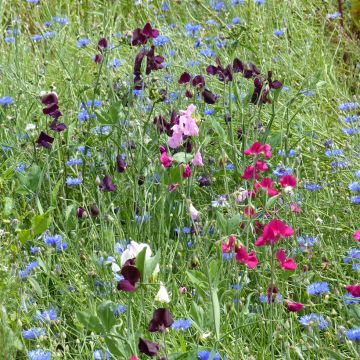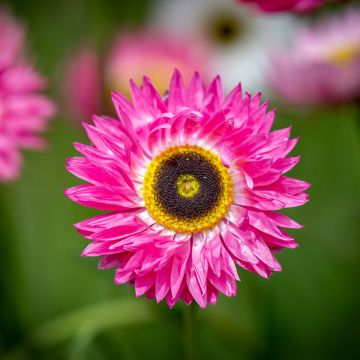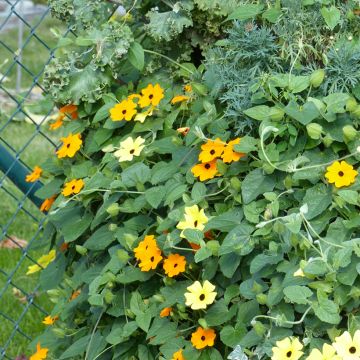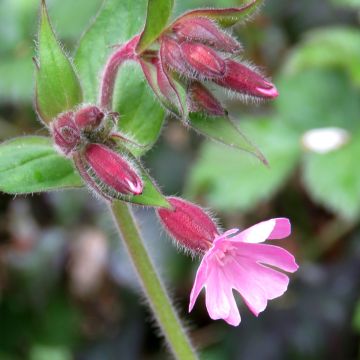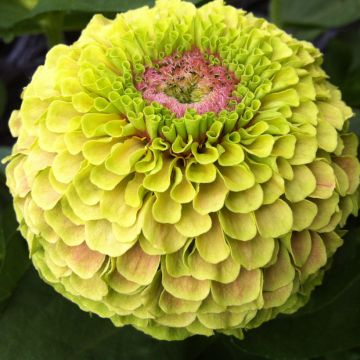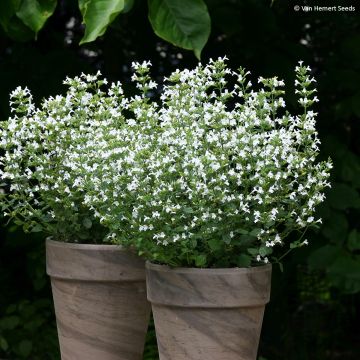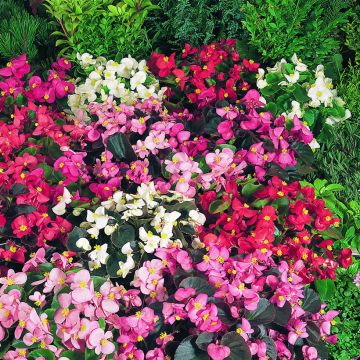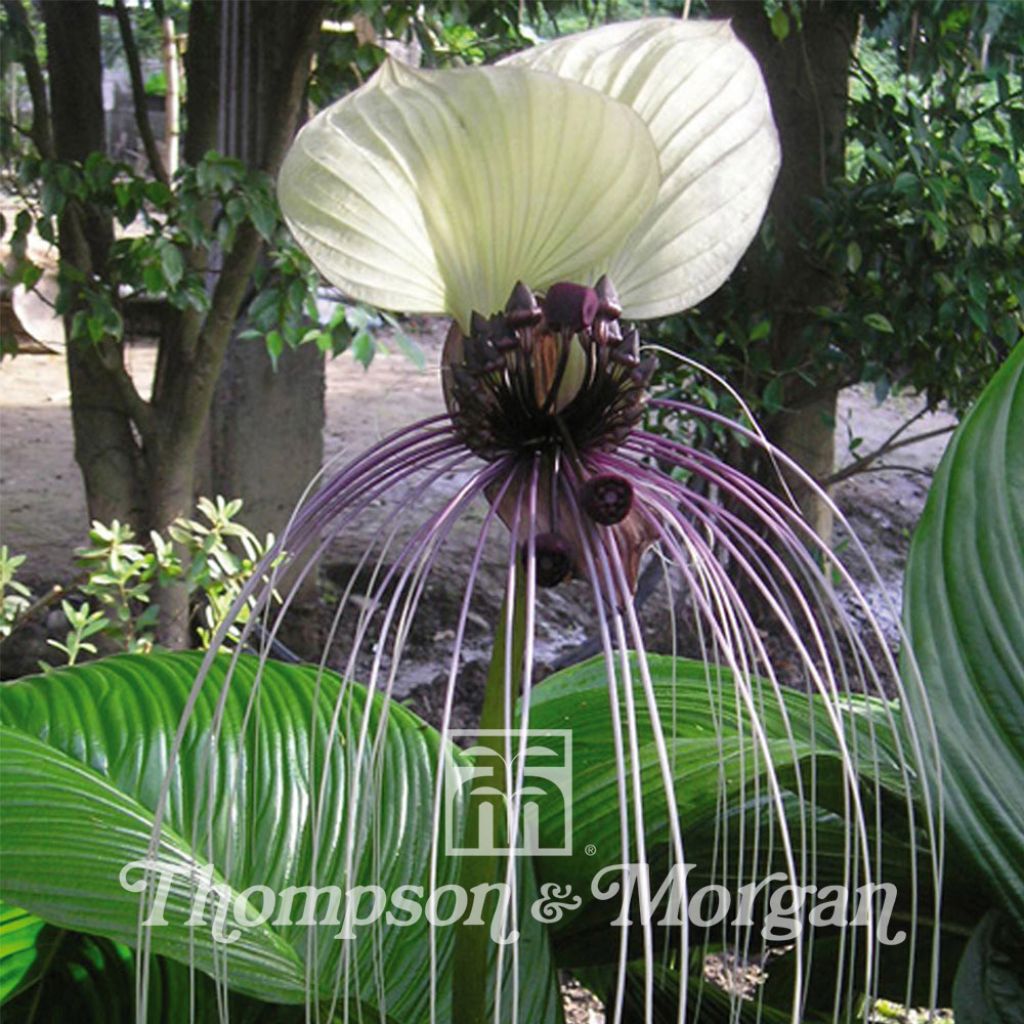

Tacca chantrieri Nivea Seeds - White bat plant
Tacca chantrieri Nivea Seeds - White bat plant
Tacca integrifolia Nivea
White batflower, Devil flower
This plant carries a 6 months recovery warranty
More information
We guarantee the quality of our plants for a full growing cycle, and will replace at our expense any plant that fails to recover under normal climatic and planting conditions.
Seed-only orders are dispatched by sealed envelope. The delivery charge for seed-only orders is €3.90.
Does this plant fit my garden?
Set up your Plantfit profile →
Description
This rare form of Bat Plant, also called Tacca integrifolia Nivea, produces strange, mysterious-looking inflorescences.They bear large, green-veined white bracts that look like bats in flight, revealing under its 'wings' a bouquet of small, sombre, drooping flowers accompanied by a cluster of long filaments that gracefully hang down. The bloom is carried by a stem emerging from a basal clump of elegant, elongated, shiny green foliage. Native to the tropical regions of Asia, this tender plant should be grown by more experienced gardeners, in a hot, humid greenhouse, in a bright place without direct sunlight.
Tacca chantrieri and T. integrifolia belong to the Taccaceae family which is composed of the single genus Tacca. They are rhizomatous perennial species native to Thailand, Burma (Myanmar) and regions close to China, and are naturalized and grown in many parts of tropical Asia. In the wild, they are found growing in forests, valleys, along rivers, from 200 m to 1300 m altitude, on acid, humus-rich soil, and in rainforests from Bhutan to Malaysia for Tacca integrifolia. In ideal growing conditions, it reaches 40 to 50 cm in height and then 75 to 90 cm when in bloom.
The plant grows from thick rhizomes. It forms a clump of basal leaves borne on petioles that measure 10 to 30 cm long, and are made up of simple, oblong leaf blades measuring 20 to 50 cm (sometimes 60 cm) long and 7 cm wide. The leaves resemble those of Spathiphyllums. They are glabrous or pubescent, cuneate and feature pointed tips. The foliage is bright green, shiny, light-looking and are deeply veined. In our climates, they bloom from June to August, then sporadically until December. Only plants that are 2 or 3 years old produce inflorescences. The 'Nivea' variety is a rare form of Tacca integrifolia. This 'batflower plant' owes its name to its very peculiar inflorescence whose shape is reminiscent of this small mammal when in flight but instead, the bracts of this form are unusually light: pure white with light green veins, turning green with age. The flowers are purplish black, formed of 5 petals and are grouped in clusters (of up to 25 flowers) at the centre of four bracts, two of which are placed in an outward facing position and are particularly overdeveloped. Each flower stem produces long, hanging, purplish to white filaments, measuring 25 cm long, that look like the tails of shooting stars. The fruits are berries that contain many small, kidney-shaped seeds.
White batflower is a plant for the more experienced gardener and is a curiosity to be closely admired, protected from the cold and scorching sun, in a heated greenhouse or conservatory without direct sunlight. It is adorned with beautiful foliage and has one of the most interesting flowers in the plant realm. As such, it is bound to fascinate and hold the interest of the beholder. However, it is sometimes capricious and demanding in terms of growing conditions. When its environment is well suited, this plant grows well, blooms plentifully and even produces baby batflowers. When a key element is missing, it slowly tires itself out and eventually disappears. Unfortunately, the only way to find out whether you can provide it with good growing conditions is to try growing it. Keep in mind that this plant originates from the hot and humid tropical zones of Asia, and that it undergoes a period of drought during its resting period, which corresponds to the winter season in our latitudes.
Report an error about the product description
Flowering
Foliage
Plant habit
Botanical data
Tacca
integrifolia
Nivea
Taccaceae
White batflower, Devil flower
Cultivar or hybrid
Other Thompson and Morgan seeds
Planting and care
Sow Tacca seeds as soon as you receive them.
Soak Tacca integrifolia Nivea seeds for 24 hours in warm to hot water. Use a thermos to maintain water temperature. Sow at a depth of 1.5 mm in trays, pots, etc. using a moist, good quality, special seed starting mix, and place in a propagator or a warm place in order to keep at an optimal temperature of 27-30 °C. It is essential that the soil temperature remains warm and constant. You can use containers equipped with clear plastic domes (with a microwave effect), or you can seal in a plastic bag. Place the pots or trays on a heat mat to heat the bottom of the containers. Germination usually takes 1 to 9 months, so be patient, do not throw away your seedlings thinking they will not germinate.
Transplant seedlings when they are large enough to handled, into 7.5 cm pots in a well-drained mixture, preferably a peat-based medium or peat-rich compost. During the growing season (spring to late summer) the plants will need to be watered very regularly and the soil should be well drained and regularly fertilized with a fertilizer for acid-loving plants. Prick out in a 10 cm pot and then in a 20 cm pot. Reduce watering significantly in winter. Keep the plants at a temperature of 15-18 °C in the winter and 25-29 °C in summer.
These plants require a peat soil, a bright shaded position and a humid atmosphere.
In order to comprehend what the ideal growing conditions for the Bat Flower are, it helps to know more about the climate of its country of origin:
Myanmar has three seasons: a temperate season from October to February with average temperatures between 20 and 24 degrees, a hot season from March to May with temperatures between 30 and 35 degrees and finally a rainy season from June to September with temperatures between 25 and 30 degrees.
Sowing period
Intended location
-
, onOrder confirmed
Reply from on Promesse de fleurs
Flower seeds
Haven't found what you were looking for?
Hardiness is the lowest winter temperature a plant can endure without suffering serious damage or even dying. However, hardiness is affected by location (a sheltered area, such as a patio), protection (winter cover) and soil type (hardiness is improved by well-drained soil).

Photo Sharing Terms & Conditions
In order to encourage gardeners to interact and share their experiences, Promesse de fleurs offers various media enabling content to be uploaded onto its Site - in particular via the ‘Photo sharing’ module.
The User agrees to refrain from:
- Posting any content that is illegal, prejudicial, insulting, racist, inciteful to hatred, revisionist, contrary to public decency, that infringes on privacy or on the privacy rights of third parties, in particular the publicity rights of persons and goods, intellectual property rights, or the right to privacy.
- Submitting content on behalf of a third party;
- Impersonate the identity of a third party and/or publish any personal information about a third party;
In general, the User undertakes to refrain from any unethical behaviour.
All Content (in particular text, comments, files, images, photos, videos, creative works, etc.), which may be subject to property or intellectual property rights, image or other private rights, shall remain the property of the User, subject to the limited rights granted by the terms of the licence granted by Promesse de fleurs as stated below. Users are at liberty to publish or not to publish such Content on the Site, notably via the ‘Photo Sharing’ facility, and accept that this Content shall be made public and freely accessible, notably on the Internet.
Users further acknowledge, undertake to have ,and guarantee that they hold all necessary rights and permissions to publish such material on the Site, in particular with regard to the legislation in force pertaining to any privacy, property, intellectual property, image, or contractual rights, or rights of any other nature. By publishing such Content on the Site, Users acknowledge accepting full liability as publishers of the Content within the meaning of the law, and grant Promesse de fleurs, free of charge, an inclusive, worldwide licence for the said Content for the entire duration of its publication, including all reproduction, representation, up/downloading, displaying, performing, transmission, and storage rights.
Users also grant permission for their name to be linked to the Content and accept that this link may not always be made available.
By engaging in posting material, Users consent to their Content becoming automatically accessible on the Internet, in particular on other sites and/or blogs and/or web pages of the Promesse de fleurs site, including in particular social pages and the Promesse de fleurs catalogue.
Users may secure the removal of entrusted content free of charge by issuing a simple request via our contact form.
The flowering period indicated on our website applies to countries and regions located in USDA zone 8 (France, the United Kingdom, Ireland, the Netherlands, etc.)
It will vary according to where you live:
- In zones 9 to 10 (Italy, Spain, Greece, etc.), flowering will occur about 2 to 4 weeks earlier.
- In zones 6 to 7 (Germany, Poland, Slovenia, and lower mountainous regions), flowering will be delayed by 2 to 3 weeks.
- In zone 5 (Central Europe, Scandinavia), blooming will be delayed by 3 to 5 weeks.
In temperate climates, pruning of spring-flowering shrubs (forsythia, spireas, etc.) should be done just after flowering.
Pruning of summer-flowering shrubs (Indian Lilac, Perovskia, etc.) can be done in winter or spring.
In cold regions as well as with frost-sensitive plants, avoid pruning too early when severe frosts may still occur.
The planting period indicated on our website applies to countries and regions located in USDA zone 8 (France, United Kingdom, Ireland, Netherlands).
It will vary according to where you live:
- In Mediterranean zones (Marseille, Madrid, Milan, etc.), autumn and winter are the best planting periods.
- In continental zones (Strasbourg, Munich, Vienna, etc.), delay planting by 2 to 3 weeks in spring and bring it forward by 2 to 4 weeks in autumn.
- In mountainous regions (the Alps, Pyrenees, Carpathians, etc.), it is best to plant in late spring (May-June) or late summer (August-September).
The harvesting period indicated on our website applies to countries and regions in USDA zone 8 (France, England, Ireland, the Netherlands).
In colder areas (Scandinavia, Poland, Austria...) fruit and vegetable harvests are likely to be delayed by 3-4 weeks.
In warmer areas (Italy, Spain, Greece, etc.), harvesting will probably take place earlier, depending on weather conditions.
The sowing periods indicated on our website apply to countries and regions within USDA Zone 8 (France, UK, Ireland, Netherlands).
In colder areas (Scandinavia, Poland, Austria...), delay any outdoor sowing by 3-4 weeks, or sow under glass.
In warmer climes (Italy, Spain, Greece, etc.), bring outdoor sowing forward by a few weeks.

































